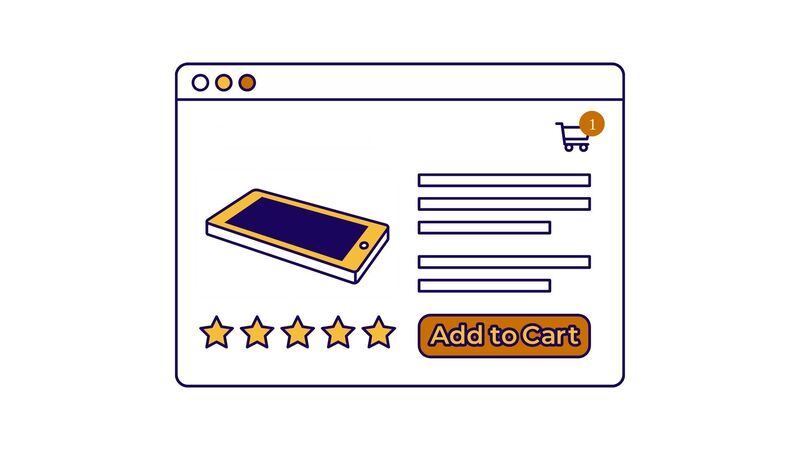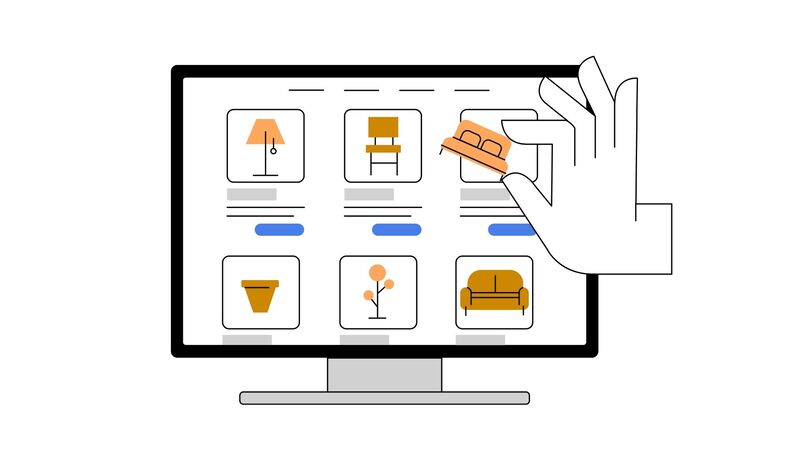For more details on how to make your Amazon listings stand out, you can explore this complete guide on optimizing Amazon product titles. A well-crafted title describes your product and also communicates value and relevance.
Why is Product Title Important?
A properly optimized listing helps your product rank higher in Amazon’s search results, driving more organic traffic to your page. Amazon product listing optimization typically involves strategic work on both the search-ranking factors and the customer-appeal factors of your listing, including:
- Keyword research
- Product title
- Bullet points
- Product description/A+ content
- Product images & video
- Backend search terms
- Reviews & ratings
- Pricing and inventory
The product title is among the most critical factors of your entire product listing. When a customer searches for a product, Amazon scans the titles (along with backend search terms and bullet points) for matching keywords.
If your title contains the customer’s search term, your product is considered relevant and becomes eligible to appear in the search results.
Keywords placed in the title have a much stronger influence on your organic search ranking than keywords placed in the product description or even the bullet points. To rank well, you must include your most important, high-volume, and highly relevant keywords in the product title.
Along with the main image, the title is what customers see when they browse a page of search results. A clear, informative title immediately tells the shopper what your product is and helps them differentiate it from competitors.
A good title gets people to click. When you put your most important information and main keywords at the start, it makes sure shoppers notice the key details before they click or scroll.

Amazon Product Title Guidelines in 2025
Titles must clearly describe main product details, such as brand, product type, and main features.
Key Amazon product title guidelines include:
- Length: Titles must not exceed 200 characters (spaces included).
- Content: No promotional phrases (e.g., “Free Shipping,” “Best Quality”) or decorative symbols (!, $, ?, {, }, etc.).
- Repetition: The same word may not appear more than twice, except for valid brand use.
- Formatting: Capitalize each major word, avoid ALL CAPS, and use numerals (e.g., “2” instead of “two”).
- Structure (recommended order): Brand Name → Style/Flavor → Product Type → Key Attribute → Color → Size/Pack Count → Model Number.
Smartphones make up over 77% of visits to retail websites and 68% of online orders around the world (Statista, 2024). Amazon suggests using short, mobile-friendly titles, preferably under 80 characters, to improve readability and search visibility.
Titles that do not meet these guidelines may be automatically corrected or suppressed until they are updated to comply.
How to Optimize Amazon Product Titles
Want to boost your Amazon sales? Here is how to optimize your product titles:
1. Follow Amazon’s Title Structure
One way to ensure your product titles meet Amazon’s standards and attract more buyers is to follow Amazon’s recommended title structure.
Brand Name + Style/Flavor + Product Type + Key Attribute + Color + Size/Pack Count + Model Number
This enables customers to easily grasp what you’re offering while enhancing the visibility of your product in search results. By incorporating essential information such as brand, type, and key features, you ensure your title is clear, informative, and professional. These characteristics contribute to improving your product’s ranking in search outcomes.
2. Use Relevant Keywords
To enhance your product’s visibility on Amazon, it’s essential to use relevant keywords strategically. The search algorithm used by Amazon places significant emphasis on the keywords included in your title.
However, putting too many keywords in your listing can make it look unnatural. This can cause fewer people to click on it.
First, identify the right keywords that your customers are searching for. A simple way is to use Amazon’s autocomplete feature: begin typing your product name into the search bar and take note of the suggested completions (these reflect actual search trends).
For deeper insights, you can use keyword research tools like Helium 10, Jungle Scout, or DataDive.
Once you have chosen your target keywords, try to put your primary keyword at the beginning of your title (if you can). Secondary keywords can organically fit into the remainder of the title, but make sure it flows well and makes sense.
SUMMARY: Product titles should balance keyword richness with strong conversion appeal.
3. Put Important Information First
This is really useful, especially on mobile. Mobile shoppers see only the first 60–80 characters, so lead with your product name and the most compelling feature or benefit right away.
Make sure that buyers quickly grasp what you’re offering, even if they don’t click to view the full title. Your item will be more noticeable in search results. Shoppers are more inclined to interact with listings that effectively convey value right away.
If you’re editing multiple listings, review how each title appears on mobile devices.
4. Highlight Key Attributes
You can improve your Amazon listings by highlighting the main features that help buyers decide quickly. Concentrate on the two or three most important features relevant to your product category. These are typically the aspects that persuade a customer to hit “Add to Cart.”
For example, emphasize the material if it’s a significant selling point, such as “Stainless Steel,” or “Organic Cotton,”. If size or quantity is really important, include it clearly in your title. If your product has a key function or benefit, such as “Waterproof” or “Rechargeable,” make sure it’s visible right away.
This approach offers customers a valuable experience to compare various products. It also increases conversion rates because when shoppers can see critical specs quickly, they are more likely to buy.

5. Optimize for Readability and Scannability
To make Amazon product titles that are easy to find and attractive to shoppers, you should make sure they are easy to read and quick to understand. Using the right keywords can help your product show up higher in search results, but clear and simple titles are what really get people to click and buy.
Begin by placing the most valuable information (brand name, product type, and top searched feature) at the beginning. This way, even the shoppers with fast, quick glances (especially on mobile) will know exactly what your product is.
Next, use simple separators like “–” or “|” to break up details and make your title easier to read. For instance, “Apple AirPods Pro – Noise Canceling | Wireless Charging Case.” Still, avoid overusing punctuation and symbols, as well as unnecessary words.
And keep in mind that titles must not include the following special characters: !, $, ?, _, {, }, ^, ¬, or ¦. Other special characters — such as **~, #, <, >, and *** may be used only in specific contexts.
To keep the title clean and concise, again, highlight only two or three of your most compelling features. Too much technical jargon or filler text can overwhelm shoppers and make your listing look less professional.
Ask yourself, if someone reads just the title, do they immediately understand what the product is and why it’s worth buying? If yes, then you’ve written a good product title.
6. Align Titles with Customer Intent
One thing to note when crafting your product titles is that you should always align them with what your customers are actually searching for.
For instance, when buyers have an informational intent, they are typically looking at different choices instead of being ready to make a purchase. Therefore, concentrate on descriptive features that assist them in gaining a clearer understanding of your product.
On the other hand, when a buyer has a transactional intent, they are nearer to finalizing a purchase and are looking for something particular. At this point, it’s important to provide exact details that demonstrate how your product meets their requirements.
7. Localize When Selling in Multiple Marketplaces
If you expand your Amazon business to international marketplaces, you will need to localize your product titles to the proper language, word usage, and search habits for each region. In these cases, too, your listings should also sound native to the audience you are attempting to reach. For instance, in the UK, use “colour” instead of “color”.
You can actually conduct native keyword research in each marketplace to ensure your titles are not only culturally accurate but are also optimized for local search behavior.
8. Benchmark Competitors
A highly successful method to improve your product titles is by analyzing your competitors. Begin by entering your main keyword on Amazon and reviewing the top listings. Observe the keywords that are most commonly used in their titles. Identify trends in the way that top sellers format their titles, including the arrangement of different attributes.
Next, identify areas where differentiation is lacking. The objective isn’t to imitate competitors, but to frame your product title in a way that emphasizes its unique qualities.
9. Align Product Titles with Listing and Bullet Points
Amazon’s A9 algorithm examines your title and also evaluates your complete listing, which includes bullet points, product descriptions, and backend keywords, in order to assess the relevance of your product to a specific search query.
10. Use Brand Registry Benefits
So note the key point here: if you’re enrolled in Amazon Brand Registry, you gain access to tools that go beyond the standard structure. One of the biggest advantages is the ability to add secondary titles and A+ Content headlines that can subtly reinforce your main keywords, features, and brand story.
11. Run A/B Tests
Once more, what’s in this for you as a Brand Registered seller? It’s all about optimization through data. With access to Amazon’s Manage Your Experiments tool in Seller Central, you can run controlled A/B tests to see which version of your product title performs better.
This is how it operates. You develop two variations of your title. Amazon then presents each version to multiple shopper segments over time and collects data on which performs best based on metrics like CTR.
12. Use Data and Feedback
To keep your Amazon titles working well, pay close attention and review them often. Start by looking at Amazon Brand Analytics, which can help you find the best keywords.
Additionally, track your click-through rates (CTR) in your campaign reports. A product with a low CTR despite having high impressions may indicate that your title is not connecting with shoppers—this could be due to unclear messaging, excessive keyword usage, or a lack of highlighting important benefits.
IMPORTANT: Avoid keyword stuffing. Instead, focus on using meaningful, high-value search terms that align with what shoppers actually search for.
Conclusion
So what does making your Amazon product titles better really mean? It’s about writing clear titles with important keywords that focus on what customers want, so more people click and buy. By using these tips, you’re getting more people to click on your product.
FAQs
How long should an Amazon product title be?
Titles must not exceed 200 characters (spaces included). Amazon recommends using short, mobile-friendly titles, preferably under 80 characters, to improve readability and search visibility. No promotional phrases (e.g., “Free Shipping,” “Best Quality”) or decorative symbols (!, $, ?, {, }, etc.).
What keywords should you include in your product title?
Include high-traffic, relevant keywords and place your primary keyword near the beginning of the title.
How can you make the title both keyword-rich and readable?
Limit your title to two or three key features. Avoid keyword stuffing. Product titles should balance keyword richness with strong conversion appeal.
Should you customize titles for different marketplaces?
When selling internationally, localize your titles to match regional spelling, units, and terminology. You can use native keyword research to adapt titles for each marketplace.
How can you test which title performs better?
If you have Brand Registration, utilize Amazon’s Manage Your Experiments feature to conduct A/B testing on various title versions. You can analyze performance metrics to identify which structure or keyword emphasis yields the best results.








